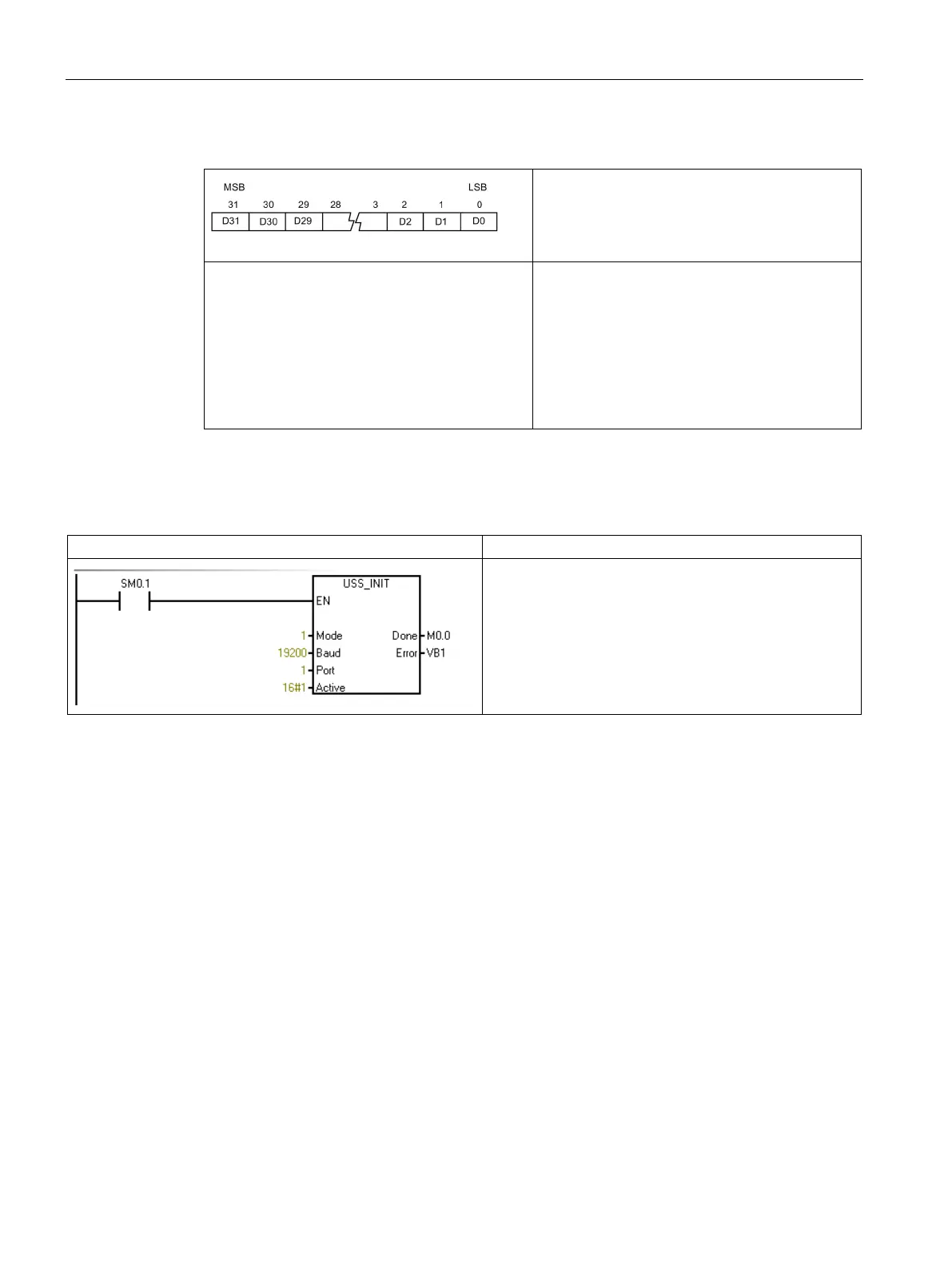Libraries
9.2 USS library instructions
S7-200 SMART
418 System Manual, 09/2015, A5E03822230-AC
Table 9- 5 Format for the Active drive parameter
This figure shows the description and format of
the active drive input
Any drive that is marked as
"Active" is automatically polled in the background
to control the drive, collect status, and prevent
serial link time-outs in the drive.
• D0 (Drive 0 active bit):
– 0 - drive not active
– 1 - drive active
• D1 (Drive 1 active bit):
– 0 - drive not active
– 1 - drive active
• ...
Refer to the USS protocol execution error codes (Page 428) to compute the time between
status polls and the error conditions that could result from executing the instruction.
Table 9- 6 USS_INIT example program
CALL USS_INIT, 1, 19200, 1, 16#1, M0.0,
VB1
Refer to "Using the USS protocol instructions" (Page 416) for and a listing of USS protocol
instructions and error codes and example programs.

